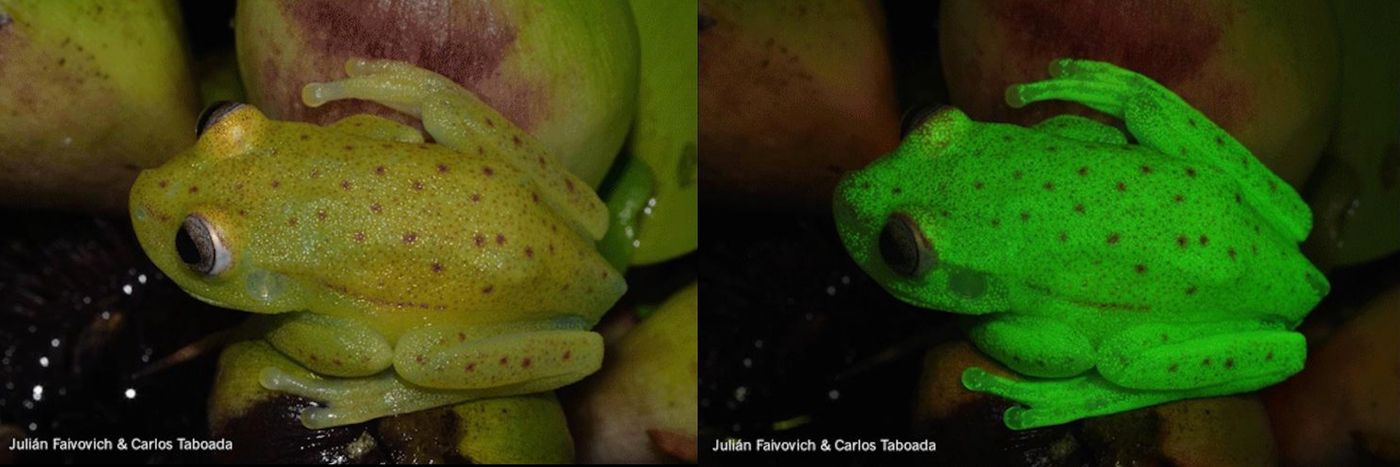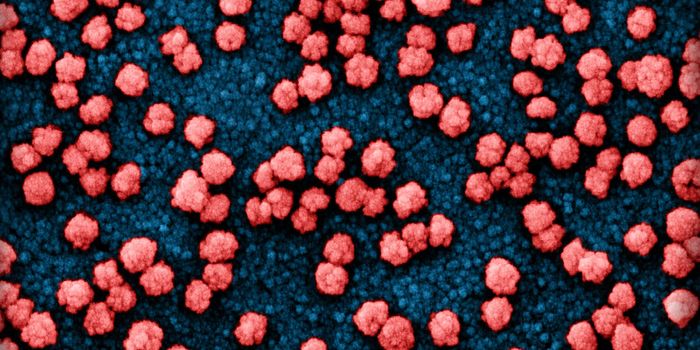The First Fluorescent Frog Ever Discovered?
Researchers from the Bernardino Rivadavia Natural Sciences Museum in Buenos Aires were in for quite a surprise when they decided to start shining ultraviolet lights on various tree frogs located in Argentina. In particular, the South American polka-dot tree frog responded to the ultraviolet light with a bit of green fluorescent feedback, something they weren’t expecting to see.
In the image below, you can see the appearance of the frog before (left) and after (right) when the ultraviolet light reacted with the frog’s skin:
Image Credit: Julián Faivovich & Carlos Taboada/Museo Argentino de Ciencias Naturales
Discussed in the Proceedings of the National Academy of Sciences (PNAS), the researchers note that this is the first ever case of fluorescence discovered in a tree frog. The feature is a rarity in land creatures, but is more common in water-based creatures like fish and turtles.
Fluorescence is different than bioluminescence because in order for fluorescence to work, ultraviolet light needs to be shining on the fluorescent surface for it to react to the light and emit other light wavelengths. Bioluminescence can occur even when there is no light shining on the creature, so it’s quite different in how it works.
Interestingly, the reason the frog’s fluorescence probably went unnoticed for so long is because they’re very dull in color in natural light. The only way anyone would have ever noticed this is if they went out their way to shine ultraviolet lights on nature, only to find something glowing back.
The researchers note that special compounds in the creatures’ skin are responsible for the fluorescence, but the curiosity to shine an ultraviolet light on them came from the fact that their skin pigment had traces of biliverdin, which is known to emit a red-colored fluorescence. With that in mind, it was surprising to find that the frogs emitted a green color instead.
Why the creatures are fluorescent is another mystery that scientists have yet to solve. Being that the feature is so rare for land animals, it doesn’t make much sense. Moreover, it’s unknown if the frogs can even see each other’s fluorescence or if it’s just a freak act of nature.
Nevertheless, that’s still way cool. Perhaps you might find some interesting things in your own back yard by shining black lights on them yourself!









